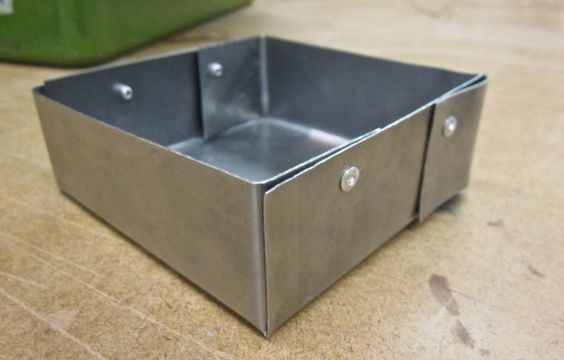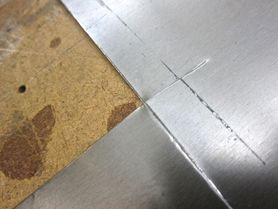This week’s box is made out of… metal.
Work started with a nice big sheet of 20 gage cold-rolled A366 steel. This stuff also goes goes by the name “Alloy 1008” — which is 99% iron, with traces of carbon, manganese, phosphorus, copper, and sulfur.
(Big thanks to Hana Newman for organizing a group-buy for the class.)
I decided to make a slightly smaller box than Peter demonstrated in class — opting for a 4" square footprint, with 1.5" tall sides. I added 1/8" in each dimension to account for the width of the bends. I started by cutting a 7 1/8" square sheet on the large metal sheer. The cuts wind up much cleaner if you bias the handle of the shear inward on the down stroke.
and then folded up the sides on the hand brake. Like all things in the ITP shop, the brake was slightly out of whack. I should have loosened and adjusted the removable blocks to put them into better alignment before making the bends.
Next I snipped and folded over the end tabs. My bends were slightly off, though, so the box ended up with one tab on the inside, and the other tab on the outside. Next time I’ll make sure the tabs are folded more precisely with respect to the first two bends.
Finally, rivets were used to hold the box together. Drilling holes for the rivets was tricky (particularly when the tabs were “inside” the box). I built a small jig with some wood to drill into a and a metal pin (a screw, in this case) that I could brace the box against and use to push the tabs into alignment during the drilling process. The whole thing clamps to the corner of the table so the box could “sit” on an inside wall without interference from the other side of the box.
The jig is at left, a close up of the cut from the metal shear is at right.


